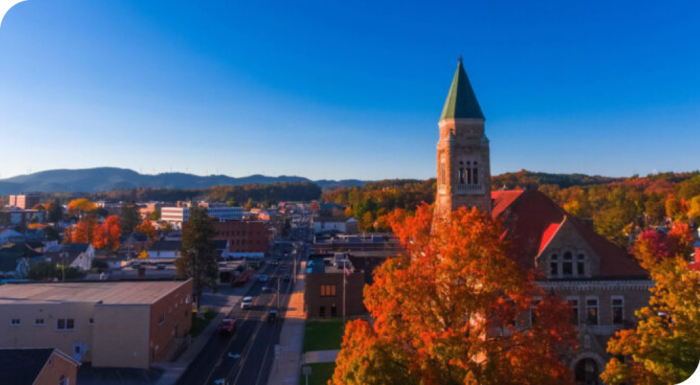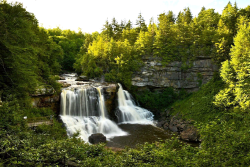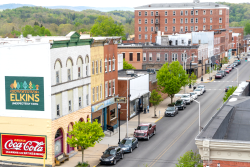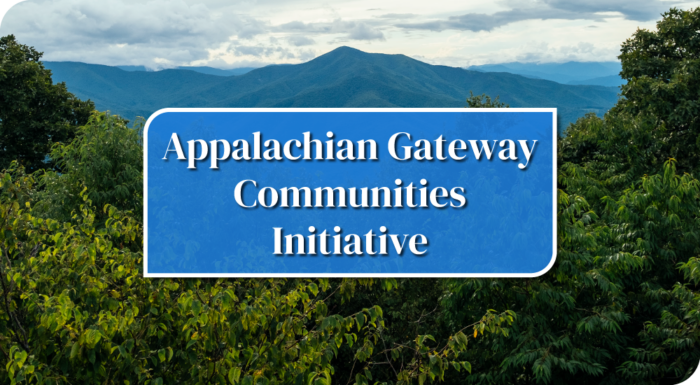
Scattered around the Monongahela National Forest, the communities comprising the Mon Forest Towns Partnership have been working to leverage this unique shared natural asset through regional thinking. When the Tucker County, West Virginia, team attended the 2018 Appalachian Gateway Communities Initiative (AGCI) workshop in Shepherdstown, West Virginia, this strategy wasn’t their initial aim. Originally, the team was focused on the economically up-and-coming Tucker County, and how to better interpret the county’s relationship with the national forest.
Building Community & Regional Synergy
This approach was revised as the team spent more time in close proximity with one another. In fact, each team member reported how the workshop was an excellent community-building exercise, which allowed them to form personal connections with their teammates that may have been impossible outside of the relatively isolated workshop setting. Because of this opportunity, unique strengths and past experiences of each team member came to the forefront in a way that helped to form the team’s idea for a regional model of collaboration. This model was inspired in part by team member Steven Leyh’s experience with the Canal Towns Partnership, a park asset tourism partnership spanning West Virginia and Maryland. This would lead to the conception of a Mon Forest Towns Partnership, which the team envisioned as a collaborative tourism board where all communities, even those that were less economically prosperous, would be well represented. As Leyh put it, these communities are now “in the same breath” as more successful Partnership towns like Davis and Thomas.
That focused time in Shepherdstown was huge…. Being away at that place-there’s nothing like that.
Emily wilson-hauger, workshop team member
After developing a detailed action plan during the workshop, the team identified a key need for branding and signage to create associations between the diverse communities in the Monongahela Forest region. For this part of their action plan, the team received a $7,000 seed grant, which ultimately funded the majority of their $8,000 budget for signage design and purchase. Another team member, Doug Arbogast (working for WVU Extension’s rural tourism division), was able to offer valuable assistance by organizing student groups, which traveled to each of the ten initial Partnership communities and interviewed the communities for input on the branding.



Bringing Branding & Engagement to Life
Once the signs were ordered for each of the communities, a number of other projects started to fall into place. Unified under the Mon Forest Towns brand, the Partnership communities began to complete the next steps of the team’s action plan, including asset mapping and further developing its model for regional collaboration. Balancing resources would be a core theme of the future work of the Partnership, especially given the variety of communities that are represented. This diversity of economic prosperity amongst the Partnership communities has been a source of struggle, because the Partnership’s limited funds tend to be allocated to communities that have the capacity to carry out meaningful change. Despite this, membership in the Partnership has become so desirable that the Partnership is working to better define what criteria a community (such as a county, town, or unincorporated area) might need to meet in order to join. The Partnership now hosts representatives from twelve communities in the Monongahela National Forest region, up from its starting number of ten.
Mon Forest Towns status helps sometimes struggling communities shine and identify themselves with a shared, critical asset. The initial seed grant has helped many of these communities begin meaningful steps towards transitioning into (or at least understanding the value of) a tourism-driven economy. Some communities have embraced the brand so far as to install new, branded map kiosks to complement the branded items that can be found in places like the Seneca Rocks Visitor Center.
This kind of engagement with the brand is exactly what the Partnership is aiming to foster. As the Partnership is beginning the process of incorporating as a 501(c)(3), its goals can expand even further than its existing partnership network with the USDA Forest Service, USDA Rural Development, and WVU Extension. Workshop team member and Partnership marketing professional Jessica Waldo identified the goal of transforming the Monongahela National Forest region into a destination akin to other national parks or the Pennsylvania Wilds. Along the path of their economic goal of extending visitor stays and moving towards multi-day vacationers, the Partnership is poised to continue providing an excellent unifying body and brand for the region.


